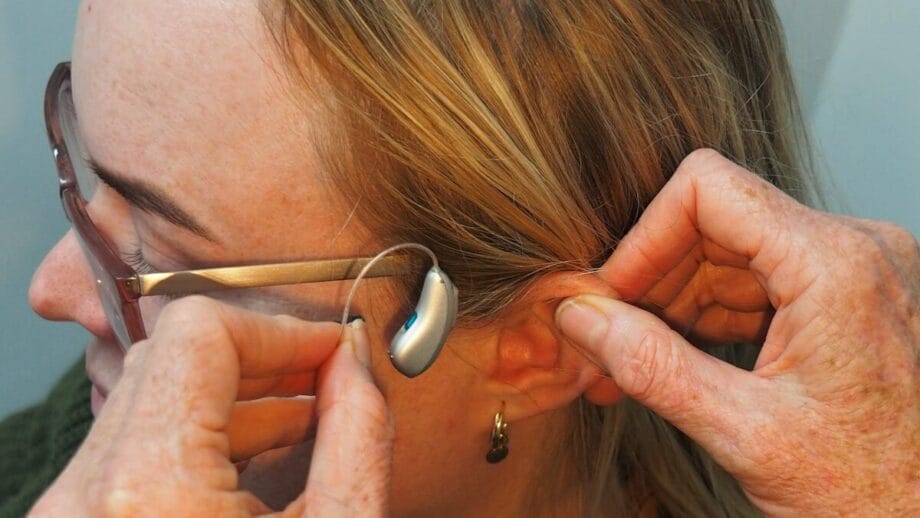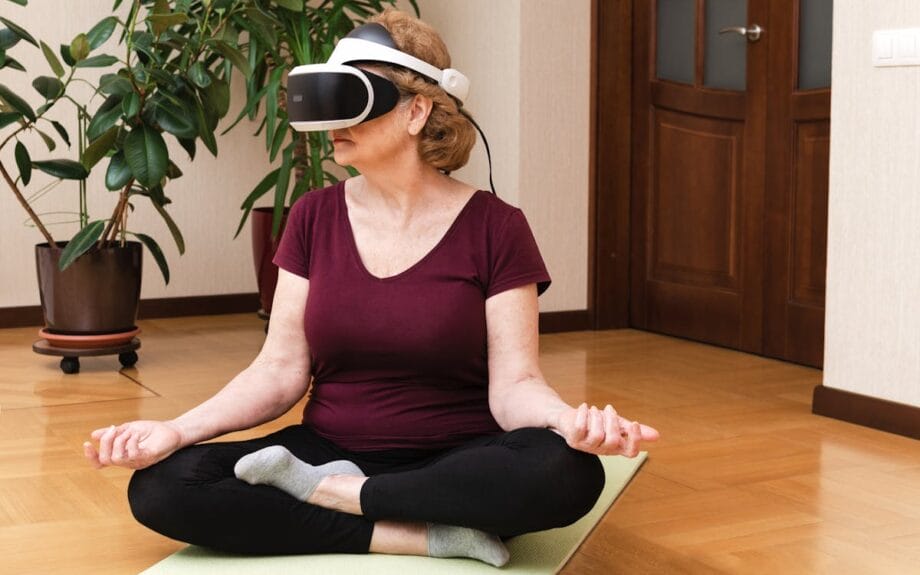Disabled and elderly assistive device refers to the devices, equipment, or systems designed to help disabled and elderly people perform daily activities that they otherwise find challenging or impossible to perform. According to the World Health Organization (WHO) Report 2022, the world population aged 60 years and more reached around 1.4 billion in 2020 and is expected to reach 2.1 billion by 2050.
Additionally, the latest report by WHO reveals that around 1.3 billion people experience some form of disability at the global level. The assistive devices help to enhance accessibility, independence, and overall well-being limitations of the disabled and elderly people by addressing their specific needs and disabilities.
The advent of technological advancements in assistive devices has significantly improved the quality of life of the elderly and disabled. It is evident from the introduction of advanced disabled and elderly assistive devices and technology that plays a vital role in enhancing the mobility and overall participation of the elderly and disabled group in various aspects of life.
As per the NMSC report 2024, the disabled and elderly assistive device industry is valued at USD 28.02 billion and is forecasted to reach USD 70.05 billion by 2030.
This article explores the latest innovations in assistive devices analyzing how advancement in assistive devices is transforming the lives of elderly and disabled people and setting new standards in accessibility.
Key Trends Driving Innovation in Disabled & Elderly Assistive Device

- Integration of Artificial Intelligence: The integration of AI enables the assistive device to transform the lives of the elderly and disabled group as it aids the assistive device to learn from user interactions and adapt to their varying needs and preferences. For example, AI-powered communication devices based on the past inputs of the users, help to predict and suggest phrases making communication more efficient for individuals with speech impairments.
- Robotics and Automation: The mobility and daily lives of aged and disabled people are transformed by the use of robotics and automated assistive devices. For instance, exoskeletons help disabled people with spinal cord injuries to stand and walk on their own. Automated home systems such as smart home devices and robotic assistants help in performing a wide range of tasks ranging from assisting in daily activities to managing medications.
- Wearable Technology: Wearable including smartwatches, fitness trackers, and medical alert systems offer real-time health monitoring, fall detection, and activity tracking. These devices provide valuable data that can be used to improve health outcomes and respond instantly to emergencies.
- Integration of IoT: The Internet of Things (IoT) devices facilitate interconnection and seamless operation of various assistive devices. It includes mobility aids, artificial vision systems, home automation, and interactive sign language that helps in establishing a network that can be managed remotely. Additionally, smart sensors in homes send alerts to caregivers about changes in the health status or unusual activity of disabled and aged people, allowing for timely intervention.
Cutting Edge Innovations in Assistive Devices

Various innovations and advancement in assistive devices for the elderly and disabled are revolutionizing their independence and quality of life. Here are some of the latest innovations:
1. Smart Wheelchairs and Mobility Aids
Traditional wheelchairs offer basic mobility assistance, but recent innovations have elevated their functionality. Wheelchairs are now incorporated with advanced technologies such as AI, robotics, and sensor systems, offering users enhanced control and safety.
For example: Munevo introduced Munevo Drive, a smart wheelchair with gesture reading tech replacing the joystick of a traditional wheelchair. The electric wheelchair features a smart control system that allows the users to operate the wheelchair through eye-tracking technology and head movements. The Munevo Drive also includes obstacle detection and collision avoidance features, ensuring a safer and more autonomous experience for disabled people.
Another breakthrough in mobility aids includes the development of an exoskeleton that is designed to assist individuals with mobility impairments. The IX BACK AIR exoskeleton is a notable example of it. Suit by Ottobock launched the IX BACK AIR exoskeleton that offers improved ergonomics, increased functionality, and enhanced user comfort. The exoskeleton is designed to assist users with tasks such as walking and lifting, significantly enhancing their quality of life and independence.
2. Advanced Communication Devices
Augmentative and Alternative Communication (AAC) devices have become indispensable tools for individuals with speech impairments. For instance, the Tobii Dynavox I-13 combines eye-tracking technology with a powerful communication platform. The device allows the users to generate speech by simply moving their eyes, offering a seamless way of communication. Tobii Dynavox also includes customizable features, allowing users to tailor the device based on their specific needs and preferences.
3. Innovative Hearing Aids
Smart hearing aids include an advanced auditory device designed to enhance hearing for individuals with hearing loss. It utilizes digital technology to process and amplify sound to enhance the overall hearing experience and make communication more accessible for users in various environments.
In response to it, Widex introduced the Widex SmartRIC, which includes a revolutionary hearing aid that enhances audiological performance with advanced technology. This device offers superior sound quality and speech understanding even in challenging listening environments. Additionally, the Phonak Lyric is an example of an invisible hearing aid that fits deep within the ear canal and offers a natural listening experience.

4. Voice-Controlled Assistants
Voice-controlled assistants provide hands-free control and accessibility for a wide range of tasks. An evidentiary example of it includes the latest launch of a personalized, natural-sounding voice technology by Microsoft for individuals with speech disabilities. This innovative technology allows users with the feature for the creation of personalized voice that closely matches their natural speech patterns, enhancing their communication experience.
5. Cutting Edge Vision Aids
Cutting-edge vision aids are revolutionizing the lives of elderly and disabled people by enhancing their independence and navigation, offering significant improvements in functionality and user experience. For instance, eSight launched its latest innovation in assistive technology with the introduction of eSight Go. The new device offers improved visual clarity, lightweight design, and expansive field view, helping people with central vision loss to gain independence in their everyday lives.
6. Personalized Assistive Technologies
Personalized assistive technology offers tailored solutions to meet the needs and preferences of the elderly and disabled individuals, enhancing their quality of life and mobility. Companies are introducing various customizable devices such as prosthetic and rehabilitation tools to offer precise support and functionality, allowing users to perform their daily activities with ease and confidence.
For example, Hand Rehabilitation Robot and Upper Limb Rehabilitation Robot include the latest rehabilitation gloves launched by Syrebo designed to aid individuals with hand disabilities. These innovative gloves utilize advanced technology to improve motor function, offering vital benefits for rehabilitation patients.
Additionally, prosthetic technology witnessed remarkable advancements with customizable options that cater to the varying needs of the individual. Korea Institute of Machinery and Materials (KIMM) launched the first smart, customizable prosthetic socket in South Korea. The prosthetic socket is capable of detecting amputation area volume to offer pain relief and improve gait. The device utilizes sensors and algorithms to detect muscle signals and translate them into precise movements that enable users to perform tasks with great convenience and ease.
Challenges and Future Directions

The advancements in assistive technology are revolutionizing the lives of the elderly and disabled people. There also exist some challenges that need to be addressed:
- Affordability and Accessibility: The cutting-edge assistive technology is expensive which limits the widespread adoption of these assistive devices by elderly or disabled people. However, governments and non-profit organizations can offer grants and subsidies to offer assistive devices to individuals who cannot afford them.
- Privacy and Security: The use of the Internet of Things (IoT) and Artificial Intelligence (AI) in assistive devices poses significant privacy and security concerns due to unauthorized access to personal health data and activity. However, implementing strong encryption protocols helps to ensure that the data transmitted by assistive devices is free from any unauthorized access.
- Awareness and Training: Many potential users and caregivers are not aware of the latest assistive technologies or are unaware of the know-how to use them effectively. It hinders the adoption of these innovative assistive devices. However, the launch of educational campaigns to raise awareness about the availability and advantages of using assistive devices. These campaigns can be launched in various channels including community events, and social media platforms to spread awareness among a large mass of audience.
Conclusion

Disabled and elderly assistive devices have witnessed a remarkable transformation in recent years that is driven by technological advancements, improving the accessibility and independence of disabled and elderly people. From smart wheelchairs and advanced communication devices to cutting-edge vision aids and smart home technologies, the latest innovations in assistive devices are transforming and redefining the possibilities and accessibility of people with disabilities and the elderly.
The evolution of these assistive technologies offers new opportunities for enhancing the quality of life, promoting inclusivity, and facilitating greater independence to perform the daily activities of people with disabilities and belonging to the aged group. Embracing these innovations and adopting the necessary steps to overcome the restraining factors would help in the widespread adoption of advanced assistive technology.
Additionally, the society would move closer to a future where accessibility is seamlessly integrated into everyday life, ensuring that everyone no matter their disability and age would have the opportunity to thrive and participate fully in their communities. Moreover, the ongoing research and developments hold a greater promising future, paving the way for a more accessible and equitable world for all.






